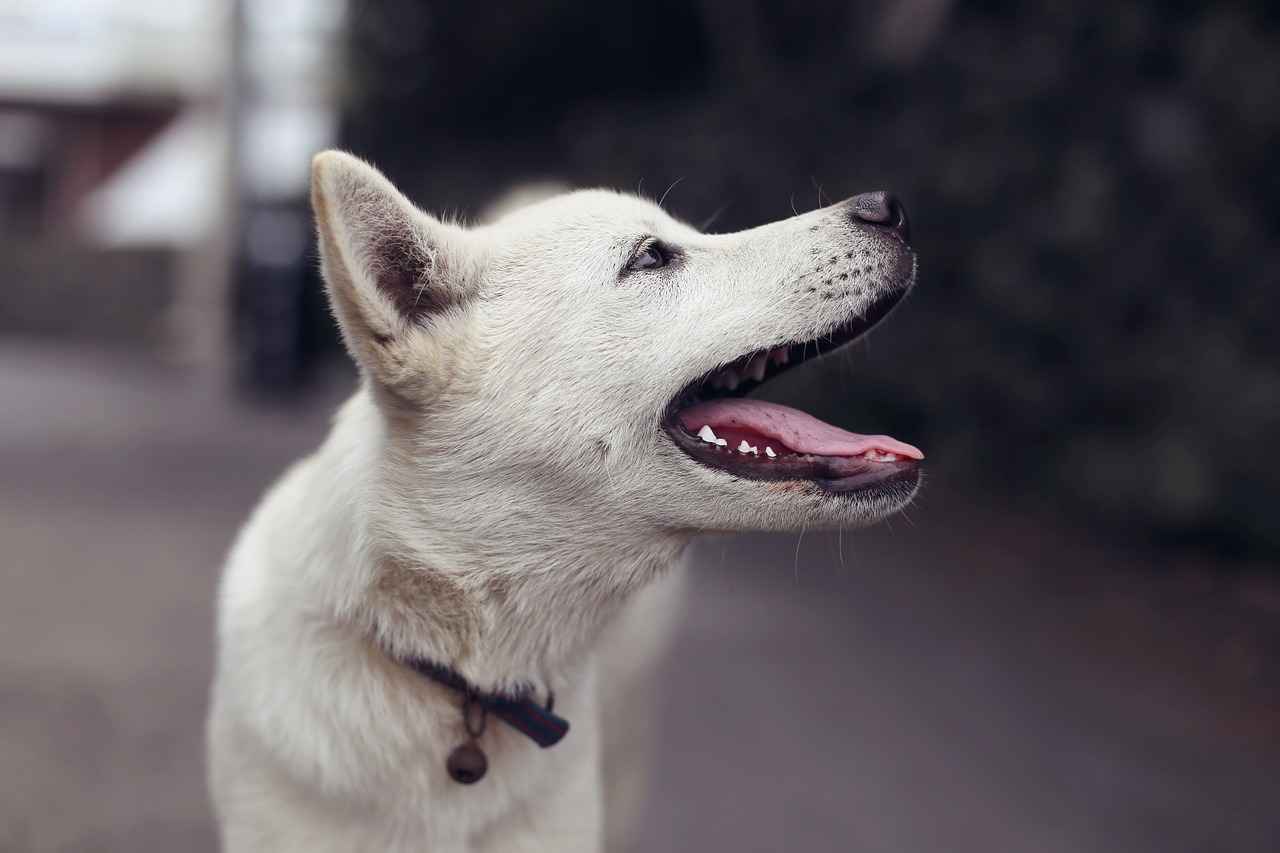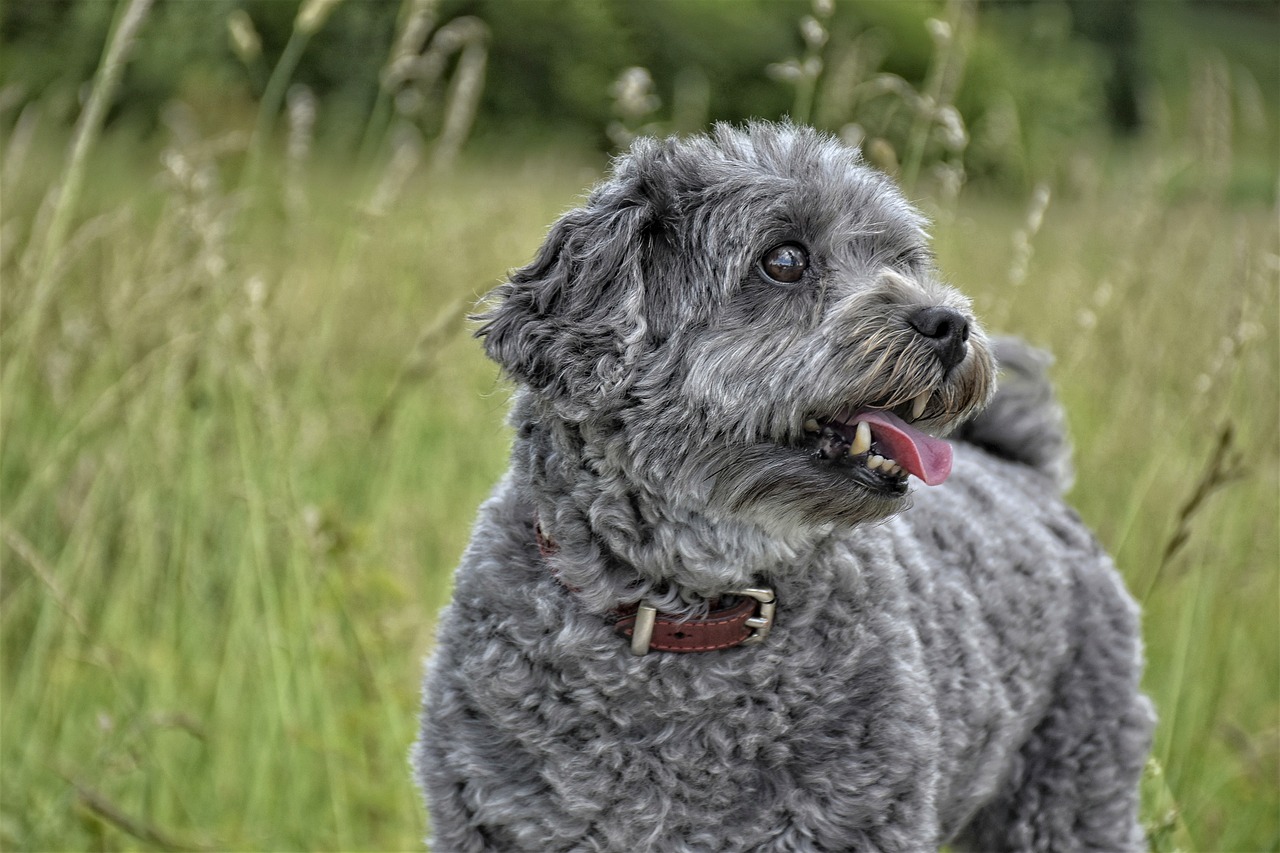This article provides an in-depth exploration of dog nail bed infections, including their causes, symptoms, prevention strategies, and treatment options. By understanding these aspects, pet owners can take proactive steps to ensure their dog’s health and well-being.
Understanding Nail Bed Infections in Dogs
Nail bed infections, medically referred to as onychitis, occur when harmful bacteria or fungi invade the sensitive area surrounding a dog’s nails. This invasion leads to inflammation, pain, and potential complications if left untreated. Recognizing the signs early can significantly improve treatment outcomes for your furry friend.
Common Causes of Nail Bed Infections
- Trauma and Injury: Any injury to the nail or surrounding tissues can create an entry point for pathogens. Protecting your dog’s paws during outdoor activities is essential.
- Allergies: Allergic reactions can lead to inflammation, making the nail bed more susceptible to infections.
- Underlying Health Conditions: Conditions such as diabetes or autoimmune disorders can compromise your dog’s immune system, increasing the risk of infections.
Symptoms of Nail Bed Infections
Identifying the symptoms of nail bed infections is crucial for timely intervention. Common signs include:
- Swelling and redness around the nail bed
- Discharge or pus emanating from the affected area
- Your dog’s reluctance to walk or play
Diagnosis of Nail Bed Infections
A veterinarian will typically perform a physical examination and may conduct tests such as cultures or biopsies to identify the specific cause of the infection.
Treatment Options for Nail Bed Infections
Treatment will vary based on the severity of the infection. Options may include:
- Antibiotics: To combat bacterial infections
- Antifungal Medications: For fungal infections
- Surgical Intervention: In severe cases, surgery may be necessary to remove damaged tissue.
Preventing Nail Bed Infections
Preventive care is essential for avoiding nail bed infections. Here are some effective strategies:
- Regular Grooming: Routine nail trimming and paw inspections can help detect problems early.
- Clean Environment: Keeping your dog’s living area clean reduces exposure to harmful pathogens.
Conclusion: Keeping Your Dog’s Nails Healthy
By understanding the causes and symptoms of nail bed infections, as well as implementing preventive measures, pet owners can help ensure their dogs maintain healthy nails and overall well-being. Regular veterinary check-ups are crucial for early detection and effective treatment.

Understanding Nail Bed Infections in Dogs
Nail bed infections, medically referred to as onychitis, are a serious concern for dog owners. These infections occur when bacteria or fungi penetrate the sensitive area surrounding a dog’s nails, leading to inflammation, pain, and potential complications if left untreated. Early recognition of the signs is crucial in preventing more severe health issues for your furry friend.
Understanding the nature of these infections is essential for every pet owner. Nail bed infections can arise from various factors, including trauma, allergies, and underlying health conditions. By grasping these causes, you can take proactive measures to protect your dog and ensure timely treatment.
Injuries to the nails or surrounding tissues can create openings for harmful pathogens, making trauma a common trigger for infections. Pet owners should be vigilant during outdoor activities, as rough terrain or sharp objects can easily cause injuries. Observing your dog for signs of discomfort, such as limping or excessive licking, is vital. These behaviors may indicate pain or discomfort, prompting you to investigate further.
Additionally, allergies can contribute to nail bed infections by causing inflammation and making the skin more susceptible to infections. Identifying allergens in your dog’s environment and managing their exposure can significantly reduce the risk of developing nail bed issues.
Recognizing the symptoms of nail bed infections is crucial for early intervention. Common signs include:
- Swelling around the nail bed
- Redness or discoloration
- Discharge from the nail area
- Your dog’s reluctance to walk or engage in play
Physical changes in your dog’s nails, such as unusual growth patterns or discoloration, may also indicate an underlying infection that requires veterinary attention. Moreover, behavioral changes, such as increased irritability or withdrawal, can signal discomfort and should not be overlooked.
In conclusion, understanding nail bed infections in dogs is essential for maintaining their health and well-being. By being proactive in identifying potential causes and recognizing symptoms early, you can ensure that your dog receives the necessary care and treatment. Regular veterinary check-ups and proper nail care are vital components in preventing these infections and keeping your dog happy and healthy.

Common Causes of Nail Bed Infections
Nail bed infections in dogs can be a concerning issue for pet owners. Understanding the common causes of these infections is crucial for prevention and effective treatment. Below, we explore various factors that can lead to nail bed infections, helping you to keep your furry friend healthy and happy.- Trauma and Injury: One of the most prevalent causes of nail bed infections is trauma. Injuries, whether from rough play or sharp objects, can compromise the integrity of the nail and surrounding skin, creating an entry point for bacteria and fungi. It’s essential to monitor your dog’s activities and provide a safe environment to minimize the risk of injury.
- Allergies: Allergic reactions can cause inflammation and irritation in your dog’s paws, making them more susceptible to infections. Common allergens include certain foods, pollen, and chemicals in cleaning products. Identifying and managing these allergens can significantly reduce the likelihood of nail bed infections.
- Underlying Health Conditions: Certain health issues, such as diabetes or autoimmune diseases, can weaken your dog’s immune system, making them more prone to infections. Regular veterinary check-ups are vital for early detection and management of these conditions.
- Improper Nail Care: Neglecting regular nail trimming can lead to overgrown nails, which can break or split, increasing the risk of infection. It’s important to establish a grooming routine that includes nail care to maintain your dog’s overall paw health.
By understanding these common causes, pet owners can take proactive steps to prevent nail bed infections in their dogs. Regular veterinary visits, proper grooming, and a safe living environment are essential components of a comprehensive health care plan for your canine companion.
Trauma and Injury
are significant contributors to nail bed infections in dogs. When your dog experiences injuries to the nails or the surrounding areas, it can create openings that allow pathogens, such as bacteria and fungi, to enter. This not only leads to infection but can also cause your dog considerable discomfort and pain.
To minimize the risk of injury during outdoor activities, it is essential to take proactive measures. Here are some practical tips to keep your dog’s paws safe:
- Inspect Paws Regularly: Make it a habit to check your dog’s paws frequently for any signs of wear, cuts, or foreign objects lodged between the toes.
- Use Protective Gear: Consider using booties or paw wax when walking your dog on rough terrains, hot pavement, or during winter months when ice and salt can cause harm.
- Limit Exposure to Hazardous Environments: Avoid areas with sharp objects, thorns, or debris that could injure your dog’s paws.
- Monitor Playtime: Supervise your dog during play, especially in environments where they could run into sharp objects or rough surfaces.
In addition to these preventive measures, it is vital to recognize the signs of trauma. If your dog exhibits symptoms such as limping, excessive licking of the paws, or reluctance to walk, these could be indications of an injury. Prompt attention to these signs can prevent the development of a more serious infection.
In conclusion, keeping your dog’s paws protected is crucial in preventing nail bed infections. By being vigilant and taking the necessary precautions, you can help ensure your dog remains healthy and free from the discomfort associated with paw injuries.
Signs of Trauma
are crucial indicators that your dog may be experiencing pain or discomfort due to an injury. It is essential for pet owners to be vigilant and observant of their dog’s behavior and physical state. One of the first signs to look for is limping. If your dog suddenly begins to favor one leg, it could indicate that they are in pain, possibly due to an injury to the paw or leg. Additionally, excessive licking of the paws or legs can also be a red flag. Dogs often lick their wounds as a natural instinct, but if this behavior becomes excessive, it may point to underlying pain or irritation.
Other signs of trauma include swelling or redness around the affected area. If you notice any discharge or unusual odors, these could signify an infection that requires immediate veterinary attention. Furthermore, a change in your dog’s behavior, such as increased irritability or reluctance to engage in their usual activities, can also be a sign of discomfort stemming from an injury.
Prompt attention to these signs is vital. Ignoring them can lead to complications, such as infections that may develop if a wound is left untreated. If you suspect your dog has sustained an injury, it is advisable to consult with a veterinarian as soon as possible. Early intervention can make a significant difference in your dog’s recovery process and overall health.
In summary, being aware of the signs of trauma—such as limping, excessive licking, swelling, and behavioral changes—can help you act quickly and effectively. Regularly observing your dog’s behavior and physical condition is a proactive approach to ensuring their well-being and preventing further complications.
Preventive Measures Against Trauma
Ensuring the health and safety of your dog’s paws is essential to their overall well-being. Regularly examining your dog’s nails and paws is vital in identifying any signs of wear, injury, or infection early on. By being proactive, you can significantly reduce the risk of complications arising from untreated issues.
One effective strategy is to incorporate routine inspections into your dog care regimen. Check for any irregularities such as cracks, splits, or excessive wear on the nails. Additionally, inspect the pads for cuts, abrasions, or foreign objects that may have become lodged. If you notice any abnormalities, consult your veterinarian for a thorough examination.
Another important measure is to consider using protective booties during walks, especially on rough or uneven terrains. These booties act as a barrier against sharp objects, hot pavement, or icy surfaces, providing essential protection for your dog’s paws. When selecting booties, ensure they fit snugly but comfortably, allowing for natural movement without causing irritation.
Moreover, avoid walking your dog in areas with harsh terrain whenever possible. Opt for smoother paths or designated dog parks where the ground is more forgiving. This not only helps in preventing injuries but also makes walks more enjoyable for your furry friend.
In addition to physical protection, maintaining your dog’s nails through regular grooming is crucial. Trimming your dog’s nails prevents overgrowth, which can lead to painful splits or even nail bed infections. If you’re unsure how to trim your dog’s nails properly, seek guidance from a professional groomer or your veterinarian.
In conclusion, by regularly checking your dog’s nails and paws, using protective booties, and ensuring proper grooming, you can greatly minimize the risk of trauma and promote your dog’s health and happiness. Prioritizing these preventive measures will lead to a more active and pain-free lifestyle for your beloved pet.
Allergies and Skin Conditions
Allergies in dogs can manifest in various ways, often leading to significant discomfort and health issues. When allergens enter the dog’s body, they can trigger an immune response that results in inflammation and increased susceptibility to infections, including nail bed infections.
Identifying the specific allergens affecting your dog is crucial. Common allergens include:
- Food ingredients (such as grains, dairy, and certain proteins)
- Environmental factors (like pollen, dust mites, and mold)
- Flea saliva, which can cause allergic reactions in sensitive dogs
When a dog suffers from allergies, the skin may become inflamed and irritated. This inflammation can compromise the skin’s barrier, making it easier for bacteria and fungi to invade the nail bed. Consequently, managing allergies effectively can significantly reduce the risk of developing nail bed infections.
To manage allergies and prevent potential infections, consider the following steps:
- Consult Your Veterinarian: A veterinarian can perform allergy testing to identify specific triggers and recommend appropriate treatments.
- Implement Dietary Changes: If food allergies are suspected, switching to a hypoallergenic diet may help alleviate symptoms.
- Maintain Hygiene: Regular bathing with hypoallergenic shampoos can help remove allergens from your dog’s skin and coat.
- Environmental Control: Reduce exposure to known allergens by keeping your home clean and using air purifiers.
By actively identifying and managing your dog’s allergies, you can not only improve their overall comfort but also significantly lower the risk of nail bed infections. This proactive approach is essential for maintaining your dog’s health and well-being.

Symptoms of Nail Bed Infections
Recognizing the symptoms of nail bed infections in dogs is essential for ensuring timely treatment and preventing further complications. Early detection can significantly improve your dog’s comfort and health. Here are some key signs to look out for:
- Swelling: One of the most noticeable symptoms is swelling around the nail bed. This can indicate inflammation and should not be ignored.
- Redness: A change in color, particularly redness around the nail, often signifies irritation or infection.
- Discharge: Any abnormal discharge, whether clear, yellow, or green, can be a sign of infection and warrants immediate veterinary attention.
- Pain or Reluctance to Walk: If your dog shows signs of pain, such as limping or reluctance to walk or play, it may be due to discomfort caused by an infection.
In addition to these physical signs, it’s crucial to observe any behavioral changes in your dog:
- Increased Irritability: If your dog becomes more irritable or aggressive, it may be experiencing pain.
- Withdrawal from Activities: A sudden disinterest in favorite activities or toys can be a clear indicator of discomfort.
Monitoring your dog’s nails is also vital. Look for:
- Discoloration: Unusual colors or patterns in the nails can indicate underlying issues.
- Unusual Growth Patterns: Changes in nail growth can signal a problem that needs veterinary evaluation.
Being vigilant about these symptoms can lead to early intervention, ultimately improving your dog’s health and well-being. If you notice any of these signs, consult your veterinarian promptly to ensure your furry friend receives the necessary care.
Physical Signs to Watch For
As a responsible dog owner, it is crucial to observe your pet’s physical condition closely, especially their nails. Changes in your dog’s nails can be subtle but significant indicators of underlying health issues. Here are some key signs to monitor:
- Discoloration: Look for any unusual color changes in the nails, such as yellowing or darkening. These changes can signify infections or other health concerns.
- Growth Patterns: Pay attention to any irregular growth patterns. If a nail appears to be growing abnormally, it might indicate an infection or a nail bed issue.
- Swelling: Noticeable swelling around the nail bed can be a clear sign of infection. If you see puffiness or inflammation, it’s essential to consult a veterinarian.
- Discharge: Any discharge from the nail bed, whether clear, yellow, or bloody, should raise immediate concern. This could indicate an infection that requires prompt treatment.
- Pain or Sensitivity: If your dog shows signs of pain, such as whining, excessive licking, or reluctance to walk, it may be due to discomfort from their nails or paws.
By staying vigilant and recognizing these signs early, you can take proactive measures to address potential issues. Regularly inspecting your dog’s nails and paws is an essential part of their grooming routine. If you notice any of these symptoms, do not hesitate to seek veterinary advice. Early intervention can significantly improve your dog’s health outcomes and comfort.
In conclusion, understanding the physical signs of potential nail bed infections can empower you to take better care of your furry friend. Remember, your dog’s well-being is paramount, and being proactive in monitoring their health can prevent more serious complications down the line.
Behavioral Changes in Your Dog
can often serve as a crucial indicator of underlying health issues, including nail bed infections. Dogs, much like humans, express discomfort and pain through their behavior. As a responsible pet owner, it is essential to be vigilant and observant of any shifts in your dog’s demeanor.
One of the first signs that something may be wrong is increased irritability. If your usually friendly dog becomes snappy or less tolerant of interactions, it could indicate that they are experiencing pain. Similarly, withdrawal from activities they typically enjoy, such as playing or going for walks, can also be a red flag. These behavioral changes often stem from discomfort caused by infections or other health concerns.
Additionally, dogs may exhibit signs of distress through changes in their eating habits. A sudden loss of appetite or reluctance to eat can be a significant indicator that your dog is not feeling well. It is also important to monitor their sleeping patterns; excessive sleeping or restlessness can signify discomfort.
To effectively identify potential health issues, it is advisable to maintain a routine observation of your dog’s habits. Keep a journal to note any behavioral changes, as this can provide valuable information for your veterinarian. Regular check-ups will also help ensure your pet’s well-being and allow for early detection of any health problems.
In conclusion, being attentive to your dog’s behavior is essential in identifying potential health issues early. By recognizing signs of discomfort, such as irritability or withdrawal, you can take proactive steps to ensure your dog’s health and happiness. Always consult with a veterinarian if you notice any concerning changes, as timely intervention can make a significant difference in your dog’s recovery and overall quality of life.

Diagnosis of Nail Bed Infections
Diagnosing nail bed infections in dogs is a crucial step in ensuring effective treatment and recovery. A thorough veterinary examination is essential to identify the underlying causes of the infection. Typically, this process begins with a comprehensive physical examination of the affected paw, where the veterinarian will assess the condition of the nails and surrounding tissues.
During the examination, the vet will look for signs of inflammation, such as swelling and redness, as well as any discharge that may indicate an infection. The dog’s behavior will also be evaluated, as signs of discomfort or pain can provide valuable insights into the severity of the condition.
In some cases, the veterinarian may recommend additional diagnostic tests to pinpoint the specific cause of the infection. These tests can include:
- Cultures: Taking a sample from the infected area to identify the specific bacteria or fungi responsible for the infection.
- Biopsies: A small tissue sample may be taken to rule out other conditions, such as tumors or autoimmune diseases, that could be affecting the nail bed.
- X-rays: Imaging may be utilized to assess the underlying bone structure and ensure there is no damage or infection extending beyond the nail bed.
Once the diagnosis is established, the veterinarian will discuss appropriate treatment options tailored to the specific needs of your dog. This may include medications such as antibiotics or antifungal treatments, along with recommendations for home care to promote healing.
Early diagnosis is critical, as untreated nail bed infections can lead to more serious complications. Regular veterinary check-ups and prompt attention to any signs of distress in your dog can significantly improve outcomes.

Treatment Options for Nail Bed Infections
Nail bed infections in dogs can be a source of significant discomfort and can lead to more serious health issues if not treated promptly. Understanding the various treatment options available is essential for pet owners aiming to restore their dog’s health and comfort. The treatment plan often depends on the severity and underlying cause of the infection.
For mild cases, antibiotics are commonly prescribed to combat bacterial infections. These medications work effectively to eliminate harmful bacteria and can be administered orally or topically, depending on the infection’s location and severity. It is crucial to follow the veterinarian’s instructions regarding dosage and duration to ensure complete recovery and prevent resistance.
In cases where fungi are the culprit, antifungal medications may be necessary. These treatments target fungal infections that can arise from environmental factors or underlying health issues. Antifungal treatments might be available in various forms, including topical creams or systemic medications, and should be used as directed by a veterinarian.
For more severe infections, particularly those that have resulted in significant tissue damage or abscess formation, surgical intervention might be required. This could involve draining infected areas or removing damaged tissue to promote healing. Surgical options should always be discussed thoroughly with a veterinary professional to understand the risks and recovery process.
In addition to these standard medical treatments, home care plays a vital role in the recovery process. Keeping the affected area clean and dry, along with regular warm saltwater soaks, can help alleviate discomfort and promote healing. However, it is essential to consult with a veterinarian before starting any home remedies.
Ultimately, recognizing the symptoms early and seeking prompt veterinary care is the best approach to ensure your dog receives the appropriate treatment for nail bed infections. Regular check-ups and maintaining good hygiene can significantly reduce the risk of future infections.
Home Remedies and Care
While veterinary care is essential for treating nail bed infections in dogs, incorporating certain home remedies can provide additional relief and support the healing process. One such remedy is the use of warm saltwater soaks, which can help reduce inflammation and promote healing when used alongside prescribed treatments.
Benefits of Warm Saltwater Soaks
- Warm saltwater soaks can create a soothing environment for your dog’s affected paws, helping to alleviate discomfort.
- The saline solution aids in cleansing the area, washing away debris and potential irritants that could exacerbate the infection.
- Salt possesses natural antiseptic properties, which can assist in reducing the risk of further infection.
How to Perform a Saltwater Soak
1. Prepare a solution by mixing 1 tablespoon of salt in 2 cups of warm water.2. Gently place your dog's paw in the solution for 5-10 minutes.3. After soaking, pat the paw dry with a clean towel.4. Repeat this process 1-2 times a day, as needed, until symptoms improve.
Additional Home Remedies
- Apple Cider Vinegar: Diluted apple cider vinegar can be applied to the affected area to help combat infection due to its antifungal and antibacterial properties.
- Turmeric Paste: A paste made from turmeric and water can be applied to the infection site, as turmeric is known for its anti-inflammatory benefits.
- Essential Oils: Certain oils, like tea tree oil, can be diluted and used to promote healing, but always consult your vet before using these.
It’s important to remember that while these home remedies can be beneficial, they should not replace professional veterinary advice. If your dog’s condition does not improve or worsens, seeking veterinary assistance is crucial for ensuring your pet’s health and well-being.
When to Seek Veterinary Assistance
When it comes to your dog’s health, being vigilant is essential. Recognizing when to seek veterinary assistance can make a significant difference in the outcome of an illness or injury. If you notice any signs of distress or unusual behavior in your dog, it’s important to act promptly.
One of the key indicators that your dog may need veterinary care is the persistence or worsening of symptoms. For instance, if your dog is exhibiting signs such as swelling, redness, or discharge from the nail bed, these can be serious indicators of a nail bed infection. Early intervention is crucial, as it can prevent complications and ensure your dog receives the necessary care.
Additionally, behavioral changes can also signal that something is wrong. If your dog becomes more irritable, refuses to walk, or shows reluctance to engage in activities they usually enjoy, it may be time to consult a veterinarian. These changes can often indicate pain or discomfort that requires professional evaluation.
- Signs to Watch For:
- Excessive licking of paws
- Limping or favoring a leg
- Changes in appetite or drinking habits
- When to Act:
- If symptoms persist for more than a few days
- If there’s a sudden change in behavior
- If your dog is in obvious pain or distress
In summary, proactive care is vital for your dog’s health. If you notice any concerning symptoms, don’t hesitate to reach out to your veterinarian. Early diagnosis and treatment can lead to better outcomes and a quicker recovery for your furry friend.

Preventing Nail Bed Infections
Preventive care is essential in ensuring your dog’s nail health and avoiding painful nail bed infections. By implementing a few simple yet effective strategies, you can significantly reduce the risk of these infections and promote your pet’s overall well-being.
First and foremost, regular grooming plays a vital role in preventing nail bed infections. This includes not only trimming your dog’s nails but also inspecting their paws for any signs of injury or irritation. By keeping nails at an appropriate length, you can prevent painful breaks or tears that may lead to infections. Additionally, consider using a file or grinder to smooth any sharp edges after trimming, which can also help prevent injuries.
Another crucial aspect of prevention is maintaining a clean environment. Regularly cleaning your dog’s living space, including bedding and play areas, can minimize exposure to harmful bacteria and fungi. Make it a habit to wash your dog’s paws after walks, especially if they have been in areas with dirt or debris, as this can help remove potential pathogens before they enter the nail bed.
Monitoring your dog’s health is equally important. Pay attention to any changes in behavior or physical condition, such as excessive licking of the paws, limping, or swelling around the nails. These could be early signs of an infection or other health issues. Regular veterinary check-ups can help catch potential problems before they escalate, ensuring your dog remains healthy.
Lastly, consider the use of protective gear, such as dog booties, during outdoor activities. This can provide an added layer of protection against injuries that could lead to infections. By taking these proactive steps, you can help ensure your furry friend stays happy and healthy.
In conclusion, by prioritizing preventive care, including grooming, environmental cleanliness, health monitoring, and protective measures, you can significantly reduce the risk of nail bed infections in your dog. A little effort goes a long way in maintaining your dog’s nail health and overall happiness.
Regular Grooming and Nail Care
Regular grooming and nail care are essential components of your dog’s overall health and well-being. By incorporating routine nail trimming and thorough paw inspections into your pet care regimen, you can identify potential issues before they escalate into serious problems, such as infections.
One of the primary benefits of routine nail trimming is the prevention of painful overgrowth. When nails become too long, they can cause discomfort and lead to changes in your dog’s walking patterns. This can result in additional stress on their joints and bones, potentially leading to long-term mobility issues. Therefore, keeping your dog’s nails at an appropriate length is crucial.
In addition to nail trimming, regular paw inspections are vital. During these inspections, look for any signs of injury, such as cuts or abrasions, which can serve as entry points for bacteria and fungi. Pay attention to the spaces between your dog’s toes, where debris can accumulate, leading to infections if not cleaned properly. A simple wipe with a damp cloth can help maintain cleanliness and prevent issues.
Another aspect of nail care includes checking for any abnormalities in the nail bed, such as swelling, discoloration, or unusual growth patterns. These signs may indicate an underlying infection or other health issues that require veterinary attention. Early detection is key to preventing complications and ensuring your dog remains healthy.
To make nail trimming a more comfortable experience for your dog, consider using positive reinforcement. Reward your pet with treats or praise during and after the grooming session, helping them associate nail care with positive experiences.
In conclusion, incorporating regular grooming and nail care into your dog’s routine is not just about aesthetics; it is a critical aspect of maintaining their health. By being proactive and attentive, you can help ensure your dog’s nails and paws remain healthy, reducing the risk of infections and promoting their overall well-being.
Maintaining a Clean Environment
Keeping your dog’s living area clean is not just about aesthetics; it plays a crucial role in their overall health and well-being. A clean environment significantly reduces exposure to harmful bacteria and fungi, which can lead to various infections and health issues. Regular cleaning of your dog’s bedding, toys, and play areas is essential for infection prevention and contributes to a happier, healthier pet.
- Regular Cleaning Schedule: Establish a routine cleaning schedule for your dog’s living space. This includes washing their bedding weekly and sanitizing play areas to eliminate any lingering pathogens.
- Proper Waste Disposal: Always dispose of waste promptly and correctly. Feces and urine can harbor bacteria that may infect your dog, so it’s vital to clean these areas thoroughly.
- Use Dog-Safe Cleaning Products: When cleaning, opt for pet-friendly cleaning products that do not contain harsh chemicals. This ensures that your dog is safe from toxic residues while maintaining a hygienic environment.
- Regular Grooming: Regular grooming not only keeps your dog looking good but also minimizes the amount of loose hair and dander in the living area. This reduces allergens and the risk of skin infections.
Importance of Clean Bedding: Your dog’s bedding is a hotspot for dirt, bacteria, and allergens. Regularly washing their bedding in hot water can help eliminate these risks. Consider using a waterproof mattress cover to protect against spills and accidents.
Play Areas Matter: Dogs love to play, and their play areas can accumulate dirt and germs quickly. Regularly clean toys and sanitize surfaces where your dog plays to prevent the buildup of harmful microorganisms.
By maintaining a clean environment, you are actively contributing to your dog’s health and reducing the risk of infections. A clean space not only helps in infection prevention but also promotes a sense of well-being for your furry friend.

Conclusion: Keeping Your Dog’s Nails Healthy
Maintaining the health of your dog’s nails is vital for their overall well-being. By understanding the intricacies of nail bed infections, pet owners can take proactive steps to prevent issues that may arise. Nail bed infections, also known as onychitis, can lead to significant discomfort for your pet if not addressed promptly.
Regular veterinary check-ups play a crucial role in ensuring early detection and treatment of potential infections. These visits allow veterinarians to assess your dog’s nail health and provide guidance on proper care. In addition to professional advice, pet owners should also be vigilant about their dog’s nail condition.
It is essential to recognize the common symptoms of nail bed infections, which may include:
- Swelling around the nail bed
- Discoloration of the nails
- Excessive licking or chewing of the paws
- Reluctance to walk or play
Understanding the causes of these infections can help in prevention. Factors such as trauma, allergies, and underlying health conditions can contribute to the development of nail bed infections. By keeping your dog’s environment clean and minimizing exposure to allergens, you can significantly reduce the risk of infections.
Furthermore, implementing a routine grooming schedule is vital. Regularly trimming your dog’s nails and inspecting their paws can catch potential issues early. Using protective gear, such as booties during outdoor activities, can also safeguard your dog’s paws from injuries that may lead to infections.
In conclusion, by being proactive and informed, pet owners can ensure their dogs enjoy healthy nails and a happy life. Preventive measures and timely veterinary care are key to avoiding complications associated with nail bed infections, ultimately contributing to your dog’s overall health and well-being.













